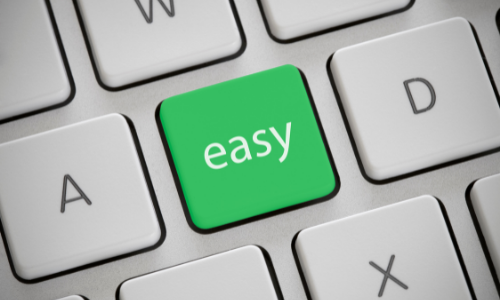starthomeschoolingnowAdmin
Top 5 Books for Homeschooling Parents
The Top 5 Homeschooling Books for Parents
If you’ve started homeschooling your child, you’re probably looking for the best homeschooling books to help you get started. Luckily, we’ve put together a list of the top five favorite homeschooling books for a homeschool mom, so you can get started on giving your child the best education possible.
DISCOVER Where to Find Free Homeschool Curriculum Samples
These books offer a variety of information and advice about home schooling, from how to get started to how to create a homeschool curriculum that fits your child’s needs. So whether you’re just starting out or you’ve been home schooling for years, these books will help you make the most of your home schooling experience.
What type of books do you need for your homeschooling journey?
The home education journey can be a daunting task in the early years. From kindergarten to middle school to high school, children learn by reading aloud and with practical ideas.
With the right resources, homeschool families can become advanced learners. Full of great ideas and great advice, ready to gain confidence through the exploration of GREAT BOOKS.
If you’re just starting out, these books will give you a solid foundation for home schooling your child. And if you’ve been home schooling for a while, these books will help you take your home schooling to the next level.
Check Out Our List Of
The TOP 5 Homeschooling Books For Parents.
CLICK Here To Learn How To Pick The Best Printer For Homeschool
My Family and Other Animals – Gerald Durrell
Description
My Family and Other Animals is the story of the adventurous time Durrell and his family spent on the island of Corfu during his childhood. Worn down by the miserable English weather, Gerry’s family takes the unusual step – for a 1930s British family – of moving somewhere hotter.
Treated to the sunshine of Greece with its array of flora and fauna, young Gerald is in a budding naturalist’s utopia, with the added bonus of being able to observe the unusual creatures known as his relatives.
His placid mother, gun-obsessed brother Leslie, angst and acne-plagued sister Margo, and eldest brother the irascible author Larry put on a dazzling display of human quirk, and combine with strays such as Spiro the local taxi-driver to brilliant comic effect. Animal and human life combine in this beautiful, timelessly entertaining memoir.
Hugh Bonneville is an acclaimed British stage, television, film and radio actor.
Project-Based Homeschooling – Lori Pickert
Description
Project-based home schooling combines children’s interests with long-term, deep, complex learning. This is an essential experience for children: to spend time working on something that matters to them, with the support of a dedicated mentor.
This book is an introduction and guide to creating the circumstances under which children can teach themselves. The author gives homeschooling parents concrete tips for helping children do challenging, meaningful, self-chosen work.
From setting up a workspace that encourages independence to building a family culture that supports self-directed learning to concrete suggestions for a step-by-step approach to inquiry-based investigation, Project-Based Home schooling shares techniques for mentoring independent, confident thinkers and learners.
The Well-Trained Mind – Susan Wise Bauer & Jessie Wise
Description
The Well-Trained Mind will instruct you, step by step, on how to give your child an academically rigorous, comprehensive education from preschool through high school–one that will train him or her to read, to think, to understand, to be well-rounded and curious about learning.
Veteran home educators Susan Wise Bauer and Jessie Wise outline the classical pattern of education called the trivium, which organizes learning around the maturing capacity of the child’s mind and comprises three stages: the elementary school “grammar stage,” when the building blocks of information are absorbed through memorization and rules; the middle school “logic stage,” in which the student begins to think more analytically; and the high-school “rhetoric stage,” where the student learns to write and speak with force and originality.
Using this theory as your model, you’ll be able to instruct your child–whether full-time or as a supplement to classroom education–in all levels of reading, writing, history, geography, mathematics, science, foreign languages, rhetoric, logic, art, and music, regardless of your own aptitude in those subjects.
Thousands of homeschooling moms and teachers have already used the detailed book lists and methods described in The Well-Trained Mind to create a truly superior education for the children in their care.
This extensively revised fourth edition contains completely updated curricula and book lists, links to an entirely new set of online resources, new material on teaching children with learning challenges, cutting-edge math and sciences recommendations, answers to common questions about home education, and advice on practical matters such as standardized testing, working with your local school board, designing a high-school program, preparing transcripts, and applying to colleges.
You do have control over what and how your child learns. The Well-Trained Mind will give you the tools you’ll need to teach your child with confidence and success.
The Brave Learner – Julie Bogart
Description
Publishers Weekly bestseller – A joyful and accessible homeschool guide to making learning a part of everyday life
Parents who are deeply invested in their children’s education can be hard on themselves and their kids. When exhausted homeschoolers are living the day-to-day grind, it can seem impossible to muster enough energy to make learning fun or interesting.
How can mom and dad nurture a love of learning amid childhood chaos, parental self-doubt, the flu, and state academic standards?
In this book, Julie Bogart distills decades of experience–homeschooling her five now grown children, developing curricula, and training homeschooling families around the world–to show parents how to make education an exciting, even enchanting, experience for their kids, whether they’re in elementary or high school.
Enchantment is about ease, not striving. Bogart shows parents how to make room for surprise, mystery, risk, and adventure in their family’s routine, so they can create an environment that naturally moves learning forward.
If a child wants to pick up a new hobby or explore a subject area that the homeschooling mom knows little about, it’s easy to simply say no to end the discussion and the parental discomfort, while dousing their child’s curious spark.
Bogart gently invites parents to model brave learning for their kids so they, too, can approach life with curiosity, joy, and the courage to take learning risks.
Home Grown – Ben Hewitt
Description
The charming story of one family’s mission to build a deeper, lasting connection to land and community on their Vermont farm
When Ben Hewitt and his wife bought a sprawling acreage of field and forest in northern Vermont, they were eager to start a self-sustaining family farm.
But over the years, the land became so much more than a building site; it became the birthplace of their two sons, the main source of family income and food, and even a classroom for their children.
Through self-directed play, exploration, and experimentation on their farm, Hewitt’s children learned how to play and read, test boundaries and challenge themselves, fail and recover. Best of all, this environment allowed their personalities to flourish, fueling further growth. In Home Grown, Hewitt shows us how small, mindful decisions about day-to-day life can lead to greater awareness of the world in our backyards and beyond.
In telling the story of his sons’ unconventional education in the fields and forests surrounding his family’s farm, he demonstrates that the sparks of learning are all around us, just waiting to be discovered. Learning is a lifelong process–and the best education is never confined to a classroom.
How do homeschoolers get free books?
One way to get homeschooling books for free is to check out your local library. Your library may have a homeschooling section as well as a traditional school section to help throughs new to homeschooling, or they may be able to order the homeschool book for you. In addition, there are many websites that offer free homeschooling resources practical tips, such as lesson plans and worksheets. Finally, homeschooling conventions often have homeschooling book swaps, where you can trade homeschooling materials with other homeschooling parents. With a little bit of digging, you should be able to find the homeschooling resources you need without spending a penny.
How do you organize books for homeschooling?
There is no one right way to organize your books, it’s all about personal experience. Some homeschool moms prefer to keep all of the homeschooling materials in one central location, such as a designated homeschooling room or closet. Others like to keep homeschooling materials (like sex education) in different areas of the house, depending on the subject matter.
For example, you might keep math books in your child’s bedroom and science books and classical education in the kitchen. Ultimately, it is up to you to decide how to best organize homeschooling materials for your family. Try out different methods and see what works best for you.
Conclusion of Top 5 Books for Homeschooling Parents
We know homeschooling can be difficult, so we’ve provided books for homeschool moms that will help you get started. Whether you’re looking to make education an exciting experience or are trying to figure out how to organize homeschool materials, these homeschooling books should have the information you need.
Where to Find Free Homeschool Curriculum Samples
Where to Find Free Homeschool Curriculum Samples
The Importance of Having Sample Homeschool Curriculum
Are you a first-time homeschool parent, or if you’re just looking to change grade levels, it’s important to get your hands on some homeschool curriculum examples. Curriculum packages can be quite expensive, and it’s important to make sure that you and your kid will be happy with the material before investing any money. Fortunately, there are many places where you can find free homeschool curriculum trials. In this blog post, we will discuss where to find them and why they are so important to many homeschool parents.
CLICK HERE TO READ MORE ABOUT The Top 5 Homeschooling Books for Parents
Homeschool without samples is like a morning without coffee.
Can you imagine your morning without coffee, that is if you’re the coffee-drinking type? homeschool without free samples is the same way. Imagine home schooling your kid without looking at any of the material first. It would be overwhelming, You would be flying by the seat of your pants and hoping that everything goes well.
This is why homeschool lesson samples are so important. They allow you to take a look at the material and get a feel for it before you invest any money. You can find homeschool lesson trials in many places, but we will discuss the best ones here.
Where to find sample homeschool curriculum
One of the best places to find free home school lessons and sample homeschool schedules is on the internet. There are many websites that offer free learning resources. These packages usually include a full lesson plan for one week, lessons, and printable worksheets. You can also find free homeschool curriculum samples in your local & public school library or bookstore.
Another great place to find education lesson trials is at homeschool conventions. Many companies offer free trials of all the subjects at these events. You can usually find a wide variety of educational ideas, from secular to religious programs.
The Importance of Curriculum Samples
Teaching your kids at home, and having access to home school lesson samples is essential. Curriculum can be expensive, and it’s important to make sure that you and your kid will be happy with the material before investing any money. Fortunately, there are many places where you can find free homeschool lesson trials.
What is the most used homeschool curriculum?
When it comes to home schooling, there are many different lesson plans to choose from. But which one is the most popular? According to recent studies, the most popular home school education is the Charlotte Mason approach.
This approach emphasizes a hands-on learning style and a strong focus on reading and literature. Other popular home school lesson plans include Classical Education, Unschooling, and Montessori. No matter which lesson package you choose, the important thing is that it works for your kids and your parents.
So take some time to explore your options and find the perfect fit for your educational needs. Who knows, you might just find that perfect home school lesson package that fits your budget and meets your child’s needs.
The Best Home Schooling Curriculums
When it comes to finding the best educational curriculums, there are many different opinions out there. But what does the research say? According to a recent study, the three most popular educational lesson plans are the Charlotte Mason approach, Classical Education, and Unschooling. But what makes these lesson plans so popular?
One of the reasons that lesson plans like Charlotte Mason, Classical Education, and Unschooling are so popular is that they offer a lot of free samples for all student grades.
This means that you can try them out before you buy them, which is a huge benefit. As homeschool families, It can be hard to know if it is going to be a good fit for your child, so it’s important to have the opportunity to try them out first.
Another reason that these lesson plans are popular is that they offer a lot of flexibility for families. If you don’t like one aspect of your student lesson plan, you can easily change it. This is not possible with a traditional schooling routine, where you are stuck with the schedule that your child’s school provides.
The final reason that educational lesson plans are so popular is, they can be customized to fit your child’s individual needs. Every child learns differently, and educational lesson plans allow you to tailor the material to your child’s strengths and weaknesses. This is not possible with traditional schooling, where all children are expected to learn the same material in the same way.
Where to Find Free Homeschool Curriculum Samples?
Now that you know the three most popular educational lesson plans, you may be wondering how to choose the right one for your family. The best way to do this is to take advantage of free educational curriculum samples. This will allow you to try out a lesson plan before you commit to it, and it will also give you a chance to see if it is a good fit for your child’s development.
Do you have to buy Education Packages?
No, you do not have to buy home school lessons. There are many free home schooling assets available online.
However, home schooling lessons can make your life a lot easier by providing structure and guidance. If you are new, or if you are struggling to create your own lesson plans, a packaged course of specific subjects can be a valuable resource.
Choosing a curriculum with your children in mind.
When choosing a student’s lesson plan, it is important to keep your children in mind. Choose a lesson plan that will keep them interested and engaged. Make sure that it covers all of the subjects that they need to learn, all science, math, and history grades.
What home schooling style is best for my family?
There are many different home schooling styles, and the best one for your family will depend on your children’s needs and learning preferences. Some of the most popular home schooling styles include the Charlotte Mason approach, Classical Education, Montessori, Unschooling, and Waldorf.
Choosing a curriculum with your situation in mind.
When you are choosing a home schooling curriculum, it is important to choose one that fits your situation. If you are home schooling multiple children, or if you have limited time and resources, choose a curriculum that is easy to use and does not require a lot of preparation. If you are new to homes chooling, choose a curriculum that is easy to follow and includes a lot of support.
Choosing a Curriculum with Yourself in Mind.
The most important thing to remember when you are choosing a home schooling curriculum is that you need to choose one that you are comfortable with.
If you are not comfortable with a particular homeschooling approach, or if you are not sure how to use a homeschooling resource, it is best to choose something else. There are many different homeschooling lesson plans and homeschooling resources available, so you are sure to find one that you are comfortable with.
What to look for in a curriculum?
When you are choosing a homeschooling curriculum, there are several things to look for.
First, make sure that the curriculum is comprehensive and covers all of the subjects that your child needs to learn.
Second, make sure that it is interesting and engaging for your child.
Third, make sure that it is easy to use and does not require a lot of preparation.
Fourth, make sure that it includes a lot of support and resources.
Fifth, make sure that it is affordable.
Sixth, make sure that it fits your homeschooling style and needs.
Seventh, make sure that you are comfortable with the curriculum and the homeschooling approach behind it.
Now that you know where to find free homeschool curriculum samples
and what to look for when choosing a homeschooling curriculum, it will be much easier to make the right decision for your family. Remember to choose a homeschooling curriculum that is interesting and engaging for your children, and one that fits your needs and learning style. With these tips in mind, you will be sure to find the perfect homeschooling curriculum for your family. I hope this article has helped you decide which home school lesson is the best fit for your family.
CLICK HERE TO Discover More About Where to Find Sample Homeschool Curriculum Outline
Homeschooling Kindergarten: 10 Tips for a Successful Year
Kindergarten Homeschooling
Are you getting ready to start homeschooling kindergarten? It can be a daunting task, but it can also be an incredibly rewarding experience to homeschool kindergarten. If you are prepared and have a plan in place, your homeschool kindergarten year will be a success! In this blog post, we will discuss 10 tips for having a successful homeschool kindergarten class. Follow these tips and your children will be learning and growing all year long!
10 Tips for Homeschooling Kindergarten.
1, Reading is #1
Kids Love Reading
On your first day of preschool, I’d suggest that reading is one thing you should focus on. Read lots and explore different topics in books such as classic ones or 45 must-read children’s books for kids of young age! By doing this it will help prepare him/her to learn socioeconomics science mathematics concepts including physics biblical literature writing vocabulary – all based on the things they’ve learned from their earliest years up until now through sight words lessons + Kindergarten level readings. Homeschool curriculum should be planned with this in mind.
CLICK TO DISCOVER THE Top 15 Best Homeschool Planners With Reviews
One way to make sure that reading stays at the top of your kindergartener’s list is by making it fun and incorporating different activities into your day. Have a special reading time every day, read stories before bedtime, or take trips to the library. Whatever you do, just make sure that reading is a part of your homeschool kindergarten daily routine. Encourage a love of reading in your kindergartener and they will be set up for success in all subject areas! tip: make sure you have plenty of books on hand that are appropriate for your child’s age and interests. Visit the library often and take advantage of the free resources available to you!
2, Focus on counting and beginning language.
Some Hands-on Activities To Help A Child Work Through His Numbers
One of the biggest concerns of homeschooling kindergarten mothers is that their kindergarten-age children are not learning reading skills. But although all elementary and middle schools are required to teach reading to children, some children can’t read. Kindergarteners who have not had preschool can be enrolled in a summer program, usually for six weeks. These programs focus on pre-reading skills such as counting and identifying letters of the alphabet
During kindergarten, you will want to continue focusing on counting and beginning language skills. One way to do this is by incorporating math into everyday activities. Have your kindergartener help you cook, do chores, or play games. These everyday activities will help them learn counting and basic math skills. In addition to teaching counting and math skills, be sure to focus on beginning language skills as well. Teach kindergarteners how to properly form letters, say their ABCs, and count to 100. These basic language skills will set them up for success in reading and writing. tip: there are many great resources available to help you teach these important skills to your kindergartener. Look for books
3, Reading Nursery Rhymes Aloud
Teaching Kindergarten By Reading Out Loud
Reading is a great way to teach kindergarten children to read. But what if your kindergartener can’t read yet? That’s where READING ALOUD comes in! Reading aloud is a great way to model good reading habits and help your child learn to love books and language arts. When you are reading to your child, take your time and emphasize the different parts of speech. Pausing after punctuation will help your kindergartener understand the importance of each part of a sentence. Be sure to also choose books that are appropriate for your kindergartener’s age and interests. If you read stories that are too difficult, your kindergartener will become frustrated and may not want to read anymore. By following these tips, you will be sure to have a successful homeschooling kindergarten year! Just remember to focus on reading, math, and language skills, and have plenty of fun along the way! tip: visit your local library or bookstore to find read-aloud books that are perfect for your kindergartener!
EXPLORE Homeschooling Plans – Seeing The Big Picture
4, Take it easy on handwriting
Children Learning To Print
Home school parents often complain about kindergarten students not writing well. What is the standard type for lowercase letters or uppercase letters? Kindergarten skills generally include recognition and discussing topical questions. There are very minimal literacy requirements in Kindergarten. I thought it was quite an accomplishment since most kindergarteners still don’t hold their pencils correctly. No problem because their hands are not fully developed yet.
One of the most important things to focus on during kindergarten is helping your child develop strong fine motor skills. This includes teaching them how to hold a pencil correctly and write letters properly. By following these tips, you will be sure to have a successful homeschooling kindergarten year! Just remember to focus on reading, math, and language skills, and have plenty of fun along the way! tip: help your kindergartener practice writing letters and numbers every day. You can find printable worksheets online, or simply use pieces of paper and have them trace letters with their finger.
5, Ensure correct letter formation
It’s much easier to learn things right the first time than to try to fix them later!
It is important to use the right letter formation when teaching kindergarteners how to print. If you teach them how to write letters correctly from the start, it will be much easier for them to learn and they will be able to write better later on. Make sure you model the correct letter formation for your kindergarteners and have them practice each letter a few times. If they make a mistake, don’t worry – just help them to correct it. Eventually, they will start to form letters correctly without any help from you.
6, Let your child’s interests guide your study
Kindergarten is a time to let your child’s interests guide your studies. If they are interested in a particular topic, explore it with them! There are so many great resources available for homeschooling kindergartner kids, and you can find almost anything online these days. You can also take advantage of opportunities to learn in the real world. If you live near a farm, take a trip to visit it! If there’s a great museum in your town, go and explore it together. The possibilities are endless – just follow your child’s interests and let them lead the way.
7, Conversation skills
-Can We Talk Here?
One of the most important things you can teach kindergarteners is communication skills. They need to be able to communicate with others effectively, both verbally and non-verbally. There are lots of ways to work on conversation skills with kindergartners. You can have them practice conversations with each other if you have multiple children, role-play different situations, or even just talk about their day. You can also work on body language, facial expressions, and gestures.
Communication skills are essential for success in life, so make sure you start teaching them early!
– Verbal communication
– Nonverbal communication
– Body language
– Facial expressions
– Gestures
8, Use games and activities for structured learning times
Homeschool Kindergarten Curriculum Can Be Fun For Children
The game can be a great opportunity to learn. It may be a little game to teach kids the count to 100. Some homeschool families like to play Uno, Go Fish, and other puzzles to help teach counting and reading.
-Children Learn Through Fun Activities
When kindergarteners are having fun, they’re learning fun! That’s why it’s important to use games and activities for structured learning times throughout the school year. These activities help kindergarteners learn in a more relaxed setting, and they can have fun with their homeschool schedule.
There are lots of different games and activities you can use for structured learning times. You don’t need to always stick to a strict schedule.
-Hands-on Learning
– Board games
– Card games
– Online games
– Puzzles
-Exciting time games
-Free Printable
There are plenty of kindergarten learning games on the internet. In my time, I have encountered a wide variety of websites that cater to children who want to learn and explore different topics in an interactive way.
9, Encourage Interest And Your Child’s Curiosity Will Grow
Homeschooling Posts are a Great Way to Encourage Interest
Tell your kids to get curious about their curiosity, get to answer questions. It is such an important part of the growth of a kindergartener. When they’re curious, they’re more likely to be engaged in learning and exploring new things. There are lots of ways to encourage curiosity in kindergartners. You can ask them questions about the world around them, give them opportunities to explore different topics, and encourage them to ask questions of their own. The more curious they are, the more they’ll learn – so make sure you encourage curiosity in your kindergartener!
How To Make Homeschooling Fun
– Asking questions
– language arts explored with flare
– Exploring different topics
– Encouraging questioning
– Nature Walks
– Frequent Breaks to keep spirits up
– learning activities to boost the imagination
Encourage your kindergartener’s interests by providing resources and opportunities for exploration.
10, Homeschool doesn’t have to mean school at home.
One of the great things about homeschooling kindergarten is that it doesn’t have to mean school at home. You can take advantage of all the learning opportunities that exist outside of the traditional classroom setting.
There are lots of ways to learn outside of the home, and you can use these opportunities to supplement your child’s education. You can go on field trips, visit different places, and even take online classes together. Homeschooling kindergarten doesn’t have to be limited to the four walls of your home – so get out there and explore!
-Use Basic Concepts to Incorporate learning with other children.
-field trips
-building fine motor skills
-Getting Outside with other kids During Physical education.
-Visiting Museums
A Child at Play
-In Conclusion
Homeschooling kindergartners don’t have to mean school at home. You can take advantage of all the learning opportunities that exist outside of the traditional classroom setting! There are lots of ways for you and your kindergartener to learn-whether it be through field trips, online classes together, or exploring other places in person. Homeschooling can be a fun and enriching experience for both you and your child when you take advantage of all the great learning opportunities available to you!
Teaching Kindergarten To A Child
Homeschooling Kindergarten:
10 Tips for a Successful Year
tips on homeschooling preschoolers
Homeschooling Plans – Seeing The Big Picture
Homeschooling Plans – Seeing The Big Picture
There’s something so satisfying about having a plan. When all the pieces of the puzzle come together and you can see the big picture, it’s incredibly rewarding. That’s how a homeschool mom feels when she has the entire year planned week by week, From math curriculum and language arts to field trips and extracurricular activities. All her days, extra resources, and ideas are set ready to be checked off her planner.
But how do you go about forging a successful school day planner? It starts with understanding your goals and what you hope to achieve as a home schooling family. Once you have that figured out, the rest falls into place. So let’s take a closer look at how to hammer out a home schooling plan that works for your family!
Are You Considering Homeschooling?
If So, Congratulations!
You’re Making One Of The Best Decisions
Possible For Your Children.
Why Do We Need A Lesson Plan?

One of the questions homeschoolers wrestle with is how to design a home schooling plan. Curriculum planning for home school can be a daunting task, but it’s important to have some kind of plan if you want your home schooling experience to be a success.
So why do we need a lesson plan? There are several reasons. First, a completed plan gives you a roadmap to follow. It ensures that you cover all the necessary subjects and keeps your homeschooling on track. Second, planning helps you stay organized. When you have a plan, you know what you need to do each day and what materials you need to have on hand, all your planning is what will keep homeschool parents focused.
Click To Discover More about: Homeschooling Kindergarten: 10 Tips for a Successful Year
What Are The Elements Of A Good Daily Lesson Plan?

A good home school plan should include the following elements:
- The subject you will be homeschooling that day
- The objectives for that subject
- What materials you will need
- The activities you will do
- The time frame for completing the activities
How To Start The Planning Process?

The best way to start the home school planning process is by figuring out your homeschooling goals. What do you expect to achieve with the next home school year? What are your priorities for all the material? Once you have a good understanding of your goals, the rest of the planning process falls into place.
Next, you need to map out your home school curriculum. This doesn’t have to be a daunting task – there are many curricula available that can fit any budget. Choose the curriculum that best meets your needs and fits into your overall plan.
Once you have your curriculum in place, it’s time to produce a daily plan.
Tips For Making Lesson Plans
1. Spend time on homeschool lesson planning
2. Figure out homeschooling goals. What do you wish to achieve over the course of the many homeschool days?
3. Choose the lessons that best meets your needs and fits into your overall homeschool plan
4. Design a daily lesson plan
How Long Should A Homeschool Lesson Be?

One of the questions homeschoolers often ask is how long should a homeschool lesson be? There’s no one-size-fits-all answer to this question, as the length of a homeschool lesson will vary depending on the age and abilities of your children. However, a good rule of thumb is to keep homeschool lessons short and manageable, especially for younger children.
5-10 minutes for preschoolers
30-45 minutes for elementary grade children
1-2 hours for a highschool student
How To Create Winning Lesson Plans For Homeschooling?

Now that you know the basics of homeschooling, how do you generate winning lesson plans for homeschooling? Here are a few tips:
1. Start with your homeschooling goals in mind – what fun subjects would you like to achieve with this particular upcoming year?
2. Choose a curriculum that meets your needs and fits into your overall homeschool year.
3. Make a lesson plan that is manageable – shorter lessons work best for younger children.
4. Make sure your lesson plans are engaging and interesting for your children.
5. Use a variety of teaching methods to keep your children interested.
Discover More About The Different Methods Of Homeschooling
6. Be flexible – be prepared to adjust your student planner as needed.
7. Be organized – have all the necessary materials ready to go before your lesson begins.
8. Use a variety of resources to help you produce a winning teacher’s manual which will give you more freedom.
The Best Way To Create A Homeschooling Plan That Works For You AT Any Grade Level
There is no one perfect way to make a homeschooling plan that works for you and your
Are There Lessons Planned Already For You?

If you’re looking for a completed plan that is already mapped out for you, consider using one of the many home school lesson packages available. These packaged curricula usually come with a lesson plan, teacher materials, and assessments. They can be a great way to get started with home schooling and take the guesswork out of planning your own home school lessons.
Creating a homeschooling plan can seem like an intimidating task, but it doesn’t have to be. By taking the time to figure out your homeschooling goals and choosing the right curriculum, you can easily create a plan that works for your family. And don’t forget to adjust your plan as needed – flexibility
What Do You Teach In Homeschool Kindergarten?

One of the most common questions homeschool families have is what do you teach in home school kindergarten? The answer to this question will vary depending on the age and abilities of your child. However, there are a few basics that all PreSchool students should learn.
Reading, writing, and math are essential skills that all students should learn, and PreSchool is a great time to start to teach these skills. In addition, social and emotional skills should also be taught in kindergarten. This includes things like how to get along with others, how to handle disagreements, and how to deal with feelings.
Click to LEARN MORE about The Different Methods of Homeschooling
Homeschooling can be a great way to give your child a personalized education that meets their individual needs. By taking the time to design a homeschooling plan, you can make sure that your child receives the best possible homeschool education.
What Should A Kindergarten Homeschool Schedule Look Like?

A homeschool kindergarten schedule will vary depending on the age and abilities of your child. However, there are a few basic things that all PreSchool homeschool students should learn.
Homeschooling a PreSchool, first and foremost, should focus on developing a solid foundation in basic subjects. This includes reading, writing, and arithmetic abilities. Students should also learn about topics including history, science, and social studies in kindergarten homeschooling.
How Long Does It Take To Create A Homeschool Curriculum?

The amount of time it takes to generate a homeschool curriculum will vary depending on your abilities and the level of detail you want in your plan. However, most home schooling parents find that creating a detailed homeschool plan can take anywhere from several hours to several days. Once your plan is created, you can use it as a foundation for all your homeschool lessons.
One of the most important things to keep in mind when creating a homeschool plan is that it should be tailored to your individual family’s needs. Be sure to take into account the age and abilities of your students, as well as your own teaching style. The best way to design a plan that works for you is to start with a blank slate and build it up gradually. Don’t be afraid to change your plan as needed – Teachers should be flexible so that they can adapt to the special needs of their families.
Lesson Planning Made Easy Peasy

One way to make home schooling less daunting is to use a pre-made homeschool lesson plan. This can take the guesswork out of what you should teach each day and can help you stay organized. If you’re looking for home schooling lesson plans that are already mapped out for you, consider using one of the many homeschool lesson packages that are available. These packages can be a great way to get started with home schooling and take the guesswork out of planning your own curriculum.
When creating your homeschool plan,
it’s important to remember that it should be tailored to your individual family’s needs. Don’t feel like you have to follow someone else’s plan – instead, use it as a guide and make adjustments as needed. By taking the time to fashion your own homeschooling plan, you can ensure that your child receives a personalized education that meets their individual needs.
How Can I Get Free Homeschool Supplies?

One of the benefits of home schooling is that you can often get free homeschool supplies. This includes things like textbooks, curricula, and even educational software. There are a number of ways to get free homeschool supplies, including:
– Search an online site for homeschool swap groups or homeschool co-ops. These groups are a great way to get access to homeschool materials at no cost.
– Contact local home schooling groups or churches. Many times these groups will have a surplus of homeschool materials that they are willing to donate to new home schooling families.
– Ask friends and family members if they have any homeschool materials that they are no longer using. Chances are, they will be more than happy to donate them to you.
– Search an online homeschool auction site. There are a number of websites that allow home schooling parents to auction off their unused homeschool materials. This can be a great way to get access to high-quality homeschool supplies at a fraction of the cost.
How Can I Homeschool Online For Free?

If you’re looking for a way to homeschool online for free, there are a number of options available. One of the best ways to homeschool online for free is to use open-source homeschool curricula site. This includes home schooling curricula that are free for download and use. There are also a number of websites that offer free home schooling courses. By taking advantage of these resources, you can homeschool online for free without having to purchase any additional materials.
Another option for home schooling online for free is to use online homeschool resources. There are a number of websites that offer free educational materials, including worksheets and lesson plans. You can also find online textbooks and other educational materials. By taking advantage of these resources, you can homeschool online for free without having to purchase any additional materials.
In Conclusion
When home schooling, having a plan is essential. This includes understanding your goals and what you hope to achieve as a home schooling family. Once you have that figured out, the rest falls into place. So let’s take a closer look at how to start planning a home schooling planner that works for core subjects There are many ways to homeschool for free, including by taking advantage of open-source homeschool curricula or online homeschool resources. By taking advantage of these fun resources and free printables, you can fabricate a complete plan that works for your schedule and school year.
The Different Methods Of Homeschooling
The Different Methods Of Homeschooling
What are the 4 education philosophies?
Homeschool Methods: Structured Learning to Eclectic Homeschoolers
Charlotte Mason, Montessori, unschooling and eclectic. Charlotte Mason’s philosophy is based on using living books, narration, and copy work. Montessori’s philosophy is based on hands-on learning styles with an emphasis on independence. Unschooling is a child-led approach in which the child decides what they want to learn. Eclectic homeschooling is a mix of different philosophies.
CLICK TO GET YOUR FREE Checklist To Start Homeschooling Your Kids
Charlotte Mason vs Montessori vs Unschooling vs Eclectic
There are a variety of methods that can be applied in the area of classical homeschooling. The method you select will have an impact on the curriculum and style of teaching. The following are some of the most popular classical homeschooling methods.
Charlotte Mason, Montessori, unschooling and eclectic. Charlotte Mason’s philosophy is based on using living books, narration, and copy work. Montessori’s philosophy is based on hands-on learning styles with an emphasis on independence. Unschooling is a child-led approach in which the child decides what they want to learn
What are the main differences between Charlotte Mason Education, Montessori, and unschooling?
Each of the three methods has its own unique educational philosophies and approach to homeschooling. Charlotte Mason homeschooling is based on the idea that young students should be taught using a “living books” curriculum, which means incorporating literature, poetry, history, and nature studies into the lessons. Montessori education homeschooling is focused on hands-on.
Discover theses 7 AWESOME Homeschool Quotes
Homeschooling Styles
The main difference between Charlotte Mason Education, Montessori principles, and unschooling is the focus on structured or unstructured learning. Charlotte Mason’s philosophy is based on using a structured approach with reading, narration, and copy work. Montessori’s philosophy is based on hands-on learning with an emphasis on independence. Unschooling is a child-centered approach in which the child decides the educational philosophy they want to learn with their homeschool mom. Homeschooled children tend to pick the best homeschool style and curriculum choices to help them with basic skills.
What are the benefits of Charlotte Mason Education, Montessori Education, and unschooling?
Each of these methods has its own benefits. Charlotte Mason’s approach is based on a structured learning environment with a focus on the classics. This can help younger children to develop a love for reading and learn about other topics in a more in-depth way. Montessori’s philosophy is based on hands-on learning which can help children to develop problem-solving skills and independence. Unschooling is a child-led approach that can help children to develop a love of learning and explore different interests.
Discover MORE ABOUT: Homeschooling Plans – Seeing The Big Picture
How do I decide which method is right for me?
The best way to decide which method is right for you is to try out each of them. You can find resources on the internet, or attend a homeschooling conference to learn more about each of these methods. Talk to other homeschoolers to get their perspective on which method works best for them. You can also read homeschooling books to help you make your decision.
What is eclectic homeschooling?
Eclectic Homeschoolers
The Eclectic Homeschooling method is a combination of several techniques. Innovative eclectic homeschoolers rely on their own judgment to select topics that make up the curriculum for their own children. These parents are always looking for the best products they can find to help them meet the needs of their homeschoolers. Many of the curricula in this method are improvised. This means that, while the basic curriculum is established, parents change it to adapt to the individual needs and interests of their children. The curriculum is generally established according to the temperament, learning style, and interests of the children. These programs typically include visits to libraries, factories, and museums.
What is Charlotte Mason Homeschooling?
The Charlotte Mason method is named after Charlotte Mason, who is known as the originator of the homeschooling movement. She herself was a homeschooler, and she wanted to establish a basic plan for a complete and effective charlotte mason approach. The Charlotte Mason Homeschooling method emphasizes poetry, fine arts, classical music, crafts, and classical literature. This method is designed to encourage an awareness of literature and involves reading to the child every day. The child is then asked to tell what he or she has heard. This starts at the age of six. By the age of ten, the child is expected to write narrations in a book. Mason encouraged the use of nature diaries as well. The child writes observations of nature in the book as well. This creates a sense of respect for the environment in the child. Mason thought that good behavior and character were critical for a child’s complete personality development.
What is the Unschooling Method?
Unschooling vs Classical Method
John Holt, a public educator in Boston, developed the unschooling method. Holt believed that kids learn best when they learn at their own pace and are guided by their own interests. He wanted to unschool the child by requiring parents to take their cues from the children. This approach has no set curriculum, schedules, or materials. It is the most unstructured of the homeschooling philosophies.
What is Montessori Homeschool Method?
Montessori Homeschooling
The Montessori Education Method had its start in Italy. It was found that children go through extremely sensitive periods in which they experience periods of intense concentration. In these phases, children will repeat an action until they receive some measure of self-satisfaction from it. This method relies on prepared environments to facilitate learning. All materials utilized in this method are meant to satisfy the child’s interior desire for spiritual development. Materials for this method range from simple to complex, and they are relatively costly.
Private School vs Homeschool Method
There are parents that choose to abandon the public school system in order to homeschool their children. While there are benefits to both, there are also some stark contrasts between the two. When weighing the decision of whether to send your child to a private school or use the school-at-home method, it is important to understand what each involves.
DISCOVER More About Homeschooling Plans – Seeing The Big Picture
Classical Education
When a child attends a preparatory school, they are under the care of professionals who have been trained in how to teach and manage children in a classroom setting. This can be reassuring to some parents who may feel that their child will be better-taken care of in a traditional school setting. Private schools also offer socialization opportunities for children, as they are surrounded by their same-age peers for the majority of the day.
When parents choose to homeschool their children, they are taking on the responsibility of teaching their children themselves. This can be a daunting task for some, but it also allows for a high degree of flexibility and customization when it comes to the child’s education. Parents who homeschool their children often find that they are more engaged in their child’s education than they would be in a traditional school setting. They also have more control over the teaching methods and materials used.
Cost of a School Year
One thing to consider when making the decision between preparatory schools and homeschooling is the cost. Private school tuition can be expensive, while most of the supplies needed for homeschooling can be obtained at little to no cost. There are a variety of methods that can be applied when homeschooling your children. The method you select will have an impact on the curriculum and style of teaching.
Homeschooling styles
There are a variety of methods that can be applied when homeschooling your children. The method you select will have an impact on the curriculum and style of teaching.
The Charlotte Mason Method
is named after the educator who developed it. This method focuses on using living books (books that are engaging and stimulate the mind) to teach children instead of using dry textbooks. Lessons are typically given in short, daily doses and often include nature walks and hands-on activities.
The Unschooling Method
is based on the belief that children learn best when they are allowed to explore their interests and passions. There is no set homeschool curriculum with this method, and parents take a more relaxed approach to homeschooling. While there is no pressure to follow a specific lesson plan, unschooling parents typically have a general idea of the topics they want their children to learn about.
The Montessori Method
was developed by Dr. Maria Montessori, who believed that children learn best through exploration and hands-on activities. With this method, children are given a lot of freedom to choose the activities they want to do, and the curriculum is often tailored to the child’s interests and abilities.
The Eclectic Homeschooling Method
is a mix of different homeschooling styles. Parents who use this method typically pick and choose the methods that work best for their children. There is no one right way to homeschool, and this method allows for a lot of flexibility.
The Right Homeschool Teachers
One of the most important decisions you will make when homeschooling your children is who will be teaching them. You have several options when it comes to finding a homeschool teacher.
Homeschool Mom of other members of the homeschool family
You can hire a tutor or use online teaching materials. You can also find a homeschool co-op, which is a group of parent-teachers who get together to teach their children together. This can be a great way to get help with lessons and to make friends with other homeschooling families.
Home Education And Parent Teachers
No matter who you choose to be your homeschool teacher teaches, it is important that they have a strong knowledge of home classical education and their own education is up-to-date. It is also important that they are patient and have a good sense of humor, as teaching homeschool families can be challenging at times.
Homeschooling Methods That Will Help Guild You.
Each homeschooling method has different goals for the education of the child. When making the decision of what homeschooling style to use, it is important to consider what you want your child to gain from homeschooling.
The Charlotte Mason Method
developed by the educator of the same name, focuses on using living books to teach children instead of using dry textbooks. Lessons are typically given in short, daily doses and often include nature walks and hands-on activities.
The Unschooling Method
is based on the belief that children learn best when they are allowed to explore their interests and passions. There is no set homeschool curriculum with this method, and parents take a more relaxed approach to homeschooling. While there is no pressure to follow a specific lesson plan, unschooling parents typically have a general idea of the topics they want their children to learn about.
The Montessori Method
was developed by Dr. Maria Montessori, who believed that children learn best through exploration and hands-on activities. With this method, children are given a lot of freedom to choose the activities they want to do, and the homeschool curriculum is often tailored to the child’s interests and abilities.
The Eclectic Method
is a mix of different homeschooling styles. Parents who use this method typically pick and choose the methods that work best for their children. There is no one right way to homeschool, and this method allows for a lot of flexibility.
Final Word
No one homeschooling method is right for everyone. When making the decision of which homeschooling style to use, it is important to consider what you want your child to gain from homeschooling. Each method has different goals, and it is important to pick one that will work best for your family. It is also important to find a homeschool teacher who has a strong knowledge of home education and their own education is up-to-date. Teaching homeschool families can be challenging at times, so it is important to find someone who is patient and has a good sense of humor.
Thank you for reading! I hope this article helped you in making the decision of which homeschooling method is right for your family.
